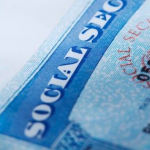
DOL Issues Temporary Regulations to Implement the FFCRA

The U.S. Department of Labor (DOL) released a temporary rule to implement the emergency paid sick leave and expanded family and medical leave requirements included in the Families First Coronavirus Response Act (FFCRA) [85 F.R. 19326, 4-6-20]. The rule is effective April 1, 2020, until December 31, 2020.
In general, the FFCRA requires covered employers to provide eligible employees up to two weeks (80 hours) of paid sick leave for certain COVID-19-related reasons. The leave must be paid at either full pay or 2/3 pay, depending on the employee’s reason for taking leave.
The FFCRA also requires covered employers to provide up to 12 weeks of expanded family and medical leave, up to 10 weeks of which must be paid at 2/3 pay, when an eligible employee is unable to work because of a need to care for a son or a daughter whose school or place of care is closed, or whose child care provider is unavailable, due to COVID-19-related reasons.
The temporary rule explains what emergency paid sick leave and expanded paid family and medical sick leave benefits must be provided, which employees are eligible, employer notice requirements, and employer recordkeeping responsibilities.
Courtesy of the APA






